|
|
Search Resources (21 Results)
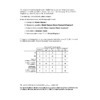 |
|
Lecture Notes | Approved: 5 years ago | 69.15 kB | Comments: 0
...3. How many chromosomes are shown in...
...There are 4 chromosomes (2 pairs of...
...pairs of homologous chromosomes), and 8 chromatids....
| 1
|
273
|
a123k456b789
|
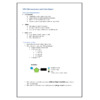 |
|
Lecture Notes | Approved: 6 years ago | 1.24 MB | Comments: 0
...DNA Chromosomes and Inheritance DNA...
...Inheritance DNA and Chromosomes: Chromosomes: thread-like strands...
...DNA and Chromosomes: Chromosomes: thread-like strands of...
...the cell 46 chromosomes in each Diploid...
...a man 270637035750500Homologous Chromosomes: There are 23...
...pairs of homologous chromosomes in the human...
...human cell 69469059626500Homologous chromosomes are identical in...
...and appearance 28651201165225Homologous chromosomes: Chromosomes that are...
...appearance 28651201165225Homologous chromosomes: Chromosomes that are paired...
...during meiosis. Such chromosomes are alike with...
...or location. 00Homologous chromosomes: Chromosomes that are...
...location. 00Homologous chromosomes: Chromosomes that are paired...
...during meiosis. Such chromosomes are alike with...
...locus or location. Chromosomes, DNA and Genes...
...pair of homologous chromosomes consist of two...
...consist of two chromosomes each of which...
...Gamete cells 23 chromosomes One copy of...
...Normal cells 46 chromosomes 2 copies of...
...meiosis: 8902701333500 7689853479800023 chromosomes are inherited from...
...Same locus, different chromosomes Haploid cells –...
...forms in which chromosomes exist at the...
...loci on the chromosomes Genotype determines the...
...determined by sex chromosomes X and Y...
| N/A |
201
|
johaneswijaya
|
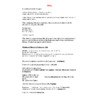 |
|
Lecture Notes | Approved: 6 years ago | 18.45 kB | Comments: 0
...N= no, of chromosomes Meiosis – process...
...a halving of chromosomes in gametes (2N...
...replicated (2 chromatids) chromosomes become visible (chromatids...
...aligns the duplicated chromosomes at the equator...
...attached to the chromosomes at the centromere....
...at the centromere. Chromosomes are arranged on...
...(now termed daughter chromosomes) These daughter chromosomes...
...chromosomes) These daughter chromosomes are then pulled...
...separating the daughter chromosomes. Finally Telophase- the...
...Finally Telophase- the chromosomes uncondense, nucleoli reform...
...around the separated chromosomes 2 nuclei. Followed...
...one half the chromosomes required to make...
...whole complement of chromosomes. The process of...
...replication – Interkinesis Chromosomes are Haploid (...
...– Haploid duplicated chromosomes align at the...
...duplicated (or daughter Chromosomes) are pulled apart...
...reproducing organisms the chromosomes occur in pairs...
...locations on the chromosomes called loci. In...
| N/A |
158
|
johaneswijaya
|
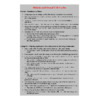 |
|
Lecture Notes | Approved: 6 years ago | 38.24 kB | Comments: 0
...parents by inheriting chromosomes. Parents endow their...
...is subdivided into chromosomes in the nucleus....
...characteristic number of chromosomes. Humans have 46...
...Humans have 46 chromosomes in their somatic...
...contain sets of chromosomes. In humans, each...
...cell has 46 chromosomes. During mitosis, the...
...During mitosis, the chromosomes become condensed and...
...At this point, chromosomes can be distinguished...
...the 46 human chromosomes can be arranged...
...display. The two chromosomes in a pair...
...Two distinct sex chromosomes, the X and...
...pattern of homologous chromosomes in human somatic...
...of the sex chromosomes determines an individual’s...
...pair of X chromosomes (XX); males have...
...X and Y chromosomes are homologous. The...
...22 pairs of chromosomes are called autosomes....
...homologous pairs of chromosomes is a consequence...
...parent. The 46 chromosomes in each somatic...
...The number of chromosomes in a single...
...two sets of chromosomes is called a...
...diploid number of chromosomes, abbreviated as 2n....
...one set of chromosomes—22 autosomes and an...
...diploid numbers of chromosomes. For humans, the...
...haploid number of chromosomes is 23 (n...
...occurred, all the chromosomes are duplicated. Each...
...differences among homologous chromosomes, sister chromatids, nonsister...
...haploid sets of chromosomes bearing genes from...
...diploid set of chromosomes. Gametes, which develop...
...four sets of chromosomes after one generation,...
...of 23 different chromosomes, one from each...
...haploid sets of chromosomes. Organisms display a...
...single set of chromosomes that cannot be...
...the duplication of chromosomes. In meiosis, there...
...I, separates homologous chromosomes. The second division,...
...half as many chromosomes as the original...
...in which the chromosomes are duplicated to...
...contrast, the two chromosomes of a homologous...
...pair are individual chromosomes that were inherited...
...different parents. Homologous chromosomes appear to be...
...I, as homologous chromosomes pair loosely along...
...a result, individual chromosomes carry genes derived...
...total number of chromosomes, reducing the number...
...of sets of chromosomes from two (diploid)...
...rather than individual chromosomes, as in mitosis,...
...meiosis, the duplicated chromosomes of each homologous...
...belong to different chromosomes. Both crossing over...
...up of homologous chromosomes during metaphase I....
...The behavior of chromosomes during meiosis and...
...independent assortment of chromosomes, crossing over, and...
...Independent assortment of chromosomes contributes to genetic...
...homologous pairs of chromosomes at the metaphase...
...homologous pair of chromosomes segregates independently of...
...maternal and paternal chromosomes into daughter cells....
...combinations possible when chromosomes assort independently into...
...possible combinations of chromosomes. Crossing over produces...
...over produces recombinant chromosomes, which combine genes...
...size of the chromosomes and the position...
...possible combinations of chromosomes. Crossing over adds...
| N/A |
166
|
johaneswijaya
|
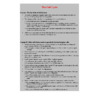 |
|
Lecture Notes | Approved: 6 years ago | 39.6 kB | Comments: 0
...are packaged into chromosomes. Every eukaryotic chromosome...
...characteristic number of chromosomes in each cell...
...egg) have 46 chromosomes, made up of...
...set of 23 chromosomes, half the number...
...The number of chromosomes in somatic cells...
...widely among species. Chromosomes are distributed during...
...cohesion. As the chromosomes condense, the region...
...are considered individual chromosomes. Each new nucleus...
...a group of chromosomes identical to the...
...us inherited 23 chromosomes from each parent:...
...of 46. The chromosomes were combined in...
...with half the chromosomes of the parent....
...the number of chromosomes from 46 (two...
...the number of chromosomes to 46 again....
...and endoplasmic reticulum. Chromosomes are duplicated only...
...late interphase, the chromosomes have been duplicated...
...In prophase, the chromosomes are tightly coiled,...
...with the condensed chromosomes. Each of the...
...equivalent collections of chromosomes. At telophase, daughter...
...endomembrane system. The chromosomes become less tightly...
...mitotic spindle distributes chromosomes to daughter cells:...
...separase. Once the chromosomes are separate, full-fledged...
...are separate, full-fledged chromosomes, they move toward...
...poleward movement of chromosomes? Two mechanisms are...
...kinetochores “walk” the chromosomes along the microtubules,...
...have shown that chromosomes are “reeled in”...
...of anaphase, duplicated chromosomes have arrived at...
...movement of bacterial chromosomes. The movement is...
...regions of eukaryotic chromosomes. However, bacterial chromosomes...
...chromosomes. However, bacterial chromosomes lack visible mitotic...
...of all the chromosomes are properly attached...
...missing or extra chromosomes. A variety of...
...unusual number of chromosomes, their metabolism may...
| 1
|
168
|
Guest
|
 |
|
Lecture Notes | Approved: 6 years ago | 402.79 kB | Comments: 0
...structure and function chromosomes – condensed or...
...and arrangement (circular chromosomes)of endosymbionts is closer...
...nuclear pores, chromatin, chromosomes, and nucleoli in...
...structure and function chromosomes – condensed or...
...and arrangement (circular chromosomes) of endosymbionts is...
...are organized in chromosomes each chromosome is...
...packaged into dense chromosomes during cell division...
...light microscopy the chromosomes are unpacked (“decondensed”)...
...characteristic number of chromosomes the number varies...
...the assortment of chromosomes for an individual...
...humans have 46 chromosomes chromosomes carry the...
...have 46 chromosomes chromosomes carry the genetic...
...condenses to form chromosomes each chromosome (duplicated...
...vesicularizes metaphase – chromosomes line up along...
...(the metaphase plate) chromosomes are most condensed,...
...mechanism that moves chromosomes to the poles...
...proteins move the chromosomes towards the poles...
...behind the moving chromosomes polar microtubules lengthen...
...carried by the chromosomes telophase – the...
...is disintegrated the chromosomes decondense nuclear membranes...
...and number of chromosomes. Draw a circle...
...you distinguish between chromosomes and chromatids, and...
...are organized in chromosomes each chromosome is...
...packaged into dense chromosomes during cell division...
...light microscopy the chromosomes are unpacked (“decondensed”)...
...characteristic number of chromosomes the number varies...
...the assortment of chromosomes for an individual...
...humans have 46 chromosomes chromosomes carry the...
...have 46 chromosomes chromosomes carry the genetic...
...condenses to form chromosomes each chromosome (duplicated...
...vesicularizes metaphase – chromosomes line up along...
...(the metaphase plate) chromosomes are most condensed,...
...mechanism that moves chromosomes to the poles...
...proteins move the chromosomes towards the poles...
...behind the moving chromosomes polar microtubules lengthen...
...carried by the chromosomes telophase – the...
...is disintegrated the chromosomes decondense nuclear membranes...
...the number of chromosomes at some point...
...the number of chromosomes would double with...
...are called homologous chromosomes one member of...
...humans, the 46 chromosomes are in 23...
...pairs of homologous chromosomes contain very similar,...
...unit, genetics) sex chromosomes aren’t strictly homologous...
...a set of chromosomes (n) has one...
...meiosis II homologous chromosomes separate during meiosis...
...by following the chromosomes (and their kinetochores)...
...don’t confuse homologous chromosomes with sister chromatids...
...condenses to form chromosomes, and homologous chromosomes...
...chromosomes, and homologous chromosomes pair the process...
...process of homologous chromosomes pairing lengthwise is...
...have disintegrated homologous chromosomes are attached by...
...opposite poles homologous chromosomes are held together...
...I – homologous chromosomes separate and are...
...set of homologous chromosomes the initial “maternal”...
...fibers disintegrate the chromosomes partially decondense nuclear...
...metaphase of mitosis chromosomes line up along...
...is disintegrated the chromosomes decondense nuclear membranes...
...daughter cells; homologous chromosomes do not pair,...
...the process, homologous chromosomes pair (synapsis), cross-over...
...zygote meiosis homologous chromosomes diploid haploid With...
...distinguish between tetrads, chromosomes, and chromatids, and...
...phase do homologous chromosomes segregate? Compare and...
...the number of chromosomes at some point...
...the number of chromosomes would double with...
...are called homologous chromosomes one member of...
...humans, the 46 chromosomes are in 23...
...pairs of homologous chromosomes contain very similar,...
...unit, genetics) sex chromosomes aren’t strictly homologous...
...a set of chromosomes (n) has one...
...meiosis II homologous chromosomes separate during meiosis...
...by following the chromosomes (and their kinetochores)...
...don’t confuse homologous chromosomes with sister chromatids...
...condenses to form chromosomes, and homologous chromosomes...
...chromosomes, and homologous chromosomes pair the process...
...process of homologous chromosomes pairing lengthwise is...
...have disintegrated homologous chromosomes are attached by...
...opposite poles homologous chromosomes are held together...
...I – homologous chromosomes separate and are...
...set of homologous chromosomes the initial “maternal”...
...fibers disintegrate the chromosomes partially decondense nuclear...
...metaphase of mitosis chromosomes line up along...
...is disintegrated the chromosomes decondense nuclear membranes...
...daughter cells; homologous chromosomes do not pair,...
...the process, homologous chromosomes pair (synapsis), cross-over...
...separation of homologous chromosomes during meiosis genotype...
...– the homologous chromosomes have the same...
...– the homologous chromosomes have different alleles...
...the composition of chromosomes for an individual...
...treated to make chromosomes easy to photograph...
...the karyotype display chromosomes are identified by...
...separation of homologous chromosomes during meiosis genotype...
...– the homologous chromosomes have the same...
...– the homologous chromosomes have different alleles...
...independent segregation of chromosomes during meiosis I...
...I between homologous chromosomes; it is the...
...genetic maps of chromosomes percentage of crossing...
...essentially unlinked many chromosomes have an overall...
...determination and sex chromosomes (see Ch. 15.2)...
...genetic inheritance; sex chromosomes are involved sex...
...are involved sex chromosomes homogametic sex –...
...of similar sex chromosomes; all gametes that...
...two different sex chromosomes, and makes gametes...
...the other, non-sex chromosomes are called autosomes...
...X and Y chromosomes have regions of...
...genes on sex chromosomes show inheritance patterns...
...of the X chromosomes Barr body –...
...patterns for X chromosomes (example: calico cat)...
...the composition of chromosomes for an individual...
...treated to make chromosomes easy to photograph...
...the karyotype display chromosomes are identified by...
...locus on the chromosomes chromosomes undergo segregation...
...on the chromosomes chromosomes undergo segregation and...
...on the same chromosomes genetic linkage –...
...independent segregation of chromosomes during meiosis I...
...I between homologous chromosomes; it is the...
...genetic maps of chromosomes percentage of crossing...
...essentially unlinked many chromosomes have an overall...
...determination and sex chromosomes sex determination varies...
...genetic inheritance; sex chromosomes are involved sex...
...are involved sex chromosomes homogametic sex –...
...of similar sex chromosomes; all gametes that...
...two different sex chromosomes, and makes gametes...
...the other, non-sex chromosomes are called autosomes...
...X and Y chromosomes have regions of...
...genes on sex chromosomes show inheritance patterns...
...located in sex chromosomes. Examples: Hemophilia, color...
...of the X chromosomes Barr body –...
...patterns for X chromosomes (example: calico cat)...
...cat) Alterations in chromosomes number or structure...
...nondisjucntion of homologous chromosomes during meiosis may...
...with one extra chromosomes called trisomic (2n+...
...1) or less chromosomes called monosomics (2n-1)...
...complete copies of chromosomes sets – Poloploidy....
...syndrome Alterations in chromosomes structures: deletion or...
...a part of chromosomes- usually lethal Loss...
...of a part chromosomes to another sites...
...sites - thin chromosomes at a particular...
...cell division where chromosomes do not separate...
...in human sex chromosomes X_ female (Turner...
...translocation – nonhomologous chromosomes pair and exchange...
...in only 45 chromosomes in body cells...
...fragile sites some chromosomes have regions that...
...from each parent chromosomes as locations/carriers of...
...genes distribution of chromosomes in making sex...
...explains Mendel’s laws chromosomes are predominantly made...
...bacterial DNA eukaryotic chromosomes usually have several...
...the ends of chromosomes are called telomeres...
...to shorting of chromosomes at the ends...
...DNA packaging in chromosomes (see Ch. 19.1)...
...steps occur when chromosomes are fully condensed...
...from each parent chromosomes as locations/carriers of...
...genes distribution of chromosomes in making sex...
...explains Mendel’s laws chromosomes are made of...
...bacterial DNA eukaryotic chromosomes usually have several...
...the ends of chromosomes are called telomeres...
...to shorting of chromosomes at the ends...
...DNA packaging in chromosomes the DNA molecule...
...DNA, except when chromosomes are condensed for...
...or yeast artificial chromosomes (YACs) plasmids as...
...process yeast artificial chromosomes (YACs) as vectors...
...of DNA as chromosomes YACs have the...
...required elements of chromosomes (centromere, telomeres) and...
...(extra sets of chromosomes) is a major...
...(extra sets of chromosomes) is a major...
| N/A |
150
|
Guest
|
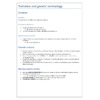 |
|
Lecture Notes | Approved: 6 years ago | 87.59 kB | Comments: 0
...are made, homologous chromosomes exchange genes and...
...then separate. The chromosomes that are seperated...
...abnormal mixture of chromosomes or chromosome fragments....
| N/A |
181
|
Guest
|
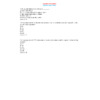 |
|
Lecture Notes | Approved: 6 years ago | 251.53 kB | Comments: 0
...cell has 64 chromosomes, how many chromosomes...
...chromosomes, how many chromosomes are expected in...
...organism with 52 chromosomes, how many bivalents...
...single pair of chromosomes. In other words,...
...correct configuration of chromosomes in a metaphase...
...(A) with 32 chromosomes and a male...
...(B) with 9 chromosomes (males are haploid,...
...complement), how many chromosomes would one expect...
...alignment of nonhomologous chromosomes B) dyad formation...
...alignment of homologous chromosomes E) chiasma segregation...
...ratio, of eukaryotic chromosomes. Answer: metacentric, submetacentric,...
...telocentric 13) Homologous chromosomes can be matched...
...a nucleus. Which chromosomes making up a...
...homology? Answer: sex-determining chromosomes 14) How many...
...haploid sets of chromosomes are present in...
...haploid sets of chromosomes are present in...
...pair of homologous chromosomes (e.g., AaAb) and...
...32 pairs of chromosomes, whereas the donkey...
...31 pairs of chromosomes. How many chromosomes...
...chromosomes. How many chromosomes would be expected...
...reshuffling of homologous chromosomes and crossing over...
...complement of 46 chromosomes plus one (extra)...
...therefore have 47 chromosomes. Assume that a...
...pipiens contain six chromosomes. Assign the symbols...
...Culex, the sex chromosomes are morphologically identical....
...is restricted to chromosomes and that the...
...your designation) on chromosomes in the drawings...
...possible array of chromosomes in the four...
...that the sex chromosomes are morphologically identical....
...morphologically identical. Draw chromosomes as you would...
...1024 combinations of chromosomes at the end...
...223 combinations of chromosomes at the end...
...cell has 64 chromosomes, how many chromosomes...
...chromosomes, how many chromosomes are expected in...
...organism with 52 chromosomes, how many bivalents...
...single pair of chromosomes. In other words,...
...correct configuration of chromosomes in a metaphase...
...(A) with 32 chromosomes and a male...
...(B) with 9 chromosomes (males are haploid,...
...complement). How many chromosomes would one expect...
...alignment of nonhomologous chromosomes B) dyad formation...
...alignment of homologous chromosomes E) chiasma segregation...
...pair of homologous chromosomes (e.g., AaAb), and...
...complement of 46 chromosomes plus one (extra)...
...therefore have 47 chromosomes. Assume that a...
...pipiens contain six chromosomes. Assign the symbols...
...Culex, the sex chromosomes are morphologically identical....
...is restricted to chromosomes and that the...
...your designation) on chromosomes in the drawings...
...possible array of chromosomes in the four...
...that the sex chromosomes are morphologically identical....
...morphologically identical. Draw chromosomes as you would...
...32 pairs of chromosomes, whereas the donkey...
...31 pairs of chromosomes. How many chromosomes...
...chromosomes. How many chromosomes would be expected...
...reshuffling of homologous chromosomes and crossing over...
...haploid sets of chromosomes are present in...
...haploid sets of chromosomes are present in...
...ratio, of eukaryotic chromosomes. Answer: metacentric, submetacentric,...
...mitochondria 28) Homologous chromosomes are those that...
...a nucleus. Which chromosomes making up a...
...homology? Answer: sex-determining chromosomes 29) After which...
...1024 combinations of chromosomes at the end...
...223 combinations of chromosomes at the end...
| N/A |
231
|
leylinda01
|
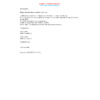 |
|
Lecture Notes | Approved: 6 years ago | 175.94 kB | Comments: 0
...is called A) chromosomes. B) chromatin. C)...
...proteins. E) move chromosomes along spindle fibers....
...several small linear chromosomes. Answer: TRUE 31)...
...and euchromatin in chromosomes. Are there any...
...DNA in the chromosomes of all eukaryotes....
...accurate segregation of chromosomes to daughter cells...
...heterochromatic regions of chromosomes that are also...
| N/A |
193
|
leylinda01
|
 |
|
Solutions | Approved: 6 years ago | 138.27 kB | Comments: 0
...cell has 64 chromosomes, how many chromosomes...
...chromosomes, how many chromosomes are expected in...
...organism with 52 chromosomes, how many bivalents...
...single pair of chromosomes. In other words,...
...correct configuration of chromosomes in a metaphase...
...(A) with 32 chromosomes and a male...
...(B) with 9 chromosomes (males are haploid,...
...complement), how many chromosomes would one expect...
...alignment of nonhomologous chromosomes B) dyad formation...
...alignment of homologous chromosomes E) chiasma segregation...
...ratio, of eukaryotic chromosomes. Answer: metacentric, submetacentric,...
...2.2 13) Homologous chromosomes can be matched...
...a nucleus. Which chromosomes making up a...
...homology? Answer: sex-determining chromosomes Section: 2.2 14)...
...haploid sets of chromosomes are present in...
...haploid sets of chromosomes are present in...
...pair of homologous chromosomes (e.g., AaAb) and...
...32 pairs of chromosomes, whereas the donkey...
...31 pairs of chromosomes. How many chromosomes...
...chromosomes. How many chromosomes would be expected...
...reshuffling of homologous chromosomes and crossing over...
...complement of 46 chromosomes plus one (extra)...
...therefore have 47 chromosomes. Assume that a...
...pipiens contain six chromosomes. Assign the symbols...
...Culex, the sex chromosomes are morphologically identical....
...is restricted to chromosomes and that the...
...your designation) on chromosomes in the drawings...
...possible array of chromosomes in the four...
...that the sex chromosomes are morphologically identical....
...morphologically identical. Draw chromosomes as you would...
...1024 combinations of chromosomes at the end...
...223 combinations of chromosomes at the end...
| N/A |
149
|
hopelessartist
|
|
Post your homework questions and get free online help from our incredible volunteers
|